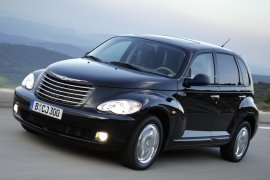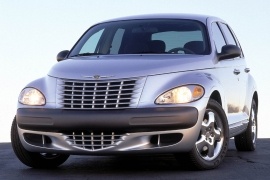CHRYSLER PT Cruiser Models/Series Timeline, Specifications & Photos
First production year: 2000
Engines: Gasoline, Diesel
Body style: Van
When it was launched in 2001, the PT Cruiser was everybody's shopping list and customers paid thousands of dollars over the sticker price to get one. In 2006, that didn't happen anymore so the Chrysler launched a mid-life cycle refresh.
The main advantage of the vehicle was its retro-modern look. With its high greenhouse and rounded hood, it resembled the styling of the '50s era. The dashboard looked like it was taken from an old family van with its round analog dials. But the modern touches were there, with LED matrix displays, like on an old computer.
For the 2006 model, the headlights were reshaped and the styling got smoother. The whole front and rear fascia were redesigned, as well as new wheel designs. But it was the same look that made customers storm the dealer's doors back in 2001.
The refreshes interior brought a new instrument cluster and a new door panel. The Limited and GT get a six-way power driver seat this year, and all models receive upgraded sound insulation. For the sound system, all the trim levels were upgraded, and, on top of that, a 368-watt Boston Acoustics premium audio was available.
For the drivetrain, the biggest improvement was for the turbo version. While the 2001 model featured a 180 hp unit, the 2006 model has received an additional 50 hp. The vehicle didn't offer standard ABS for all of its range. It was available for the GT and Limited trim levels. Another disappointment was the lack of a good rear suspension. The PT Cruiser didn't take only the look from the '50s. It also took a steel beam rear axle even if it was front-wheel-drive.
The PT Cruiser was one of the cars the most spectacular examples of the retro-design trend at the beginning of the 2000s. It was launched at the 1999 North American International Auto Show in Detroit.
Chrysler designed the PT Cruiser to fit the NHTSA (National Highway Traffic Safety Administration) criteria as a truck and treat it accordingly, including the EPA ratings. Thus, the companies could buy it and decrease the average company fuel consumption. The trick worked and the private customers were relaxed even though the crash-tests revealed very poor protection for its occupants. But the car looked too different to be avoided.
The fenders resembled the look of the American sedans from the '30s and '40s, and the hot-rod aesthetics of the '50s and '60s. But there was a modern shape for the headlights and taillights and the car was fitted with new technologies of the '2000s. A big, shield-like, grille stood tall from the bottom of the apron to the hood gap, interrupted only by the front bumper.
Inside, the flat dashboard and the cue-ball shape of the gear lever enhanced the retro-design of the car. Even the dials and the shape of the steering wheel were on the same page. As for the flat seats and bench, nobody seemed to care about it.
Under the hood, the PT Cruiser was offered with various engines from a small, 1.6-liter up to a turbocharged 2.4-liter unit that could give performances appropriate for that '60s hot-rod look. For the European market, the PT-Cruiser was assembled in Austria. The car was produced in Mexic, as well. During its 9 years of production, it was produced in 1.35 million units.

